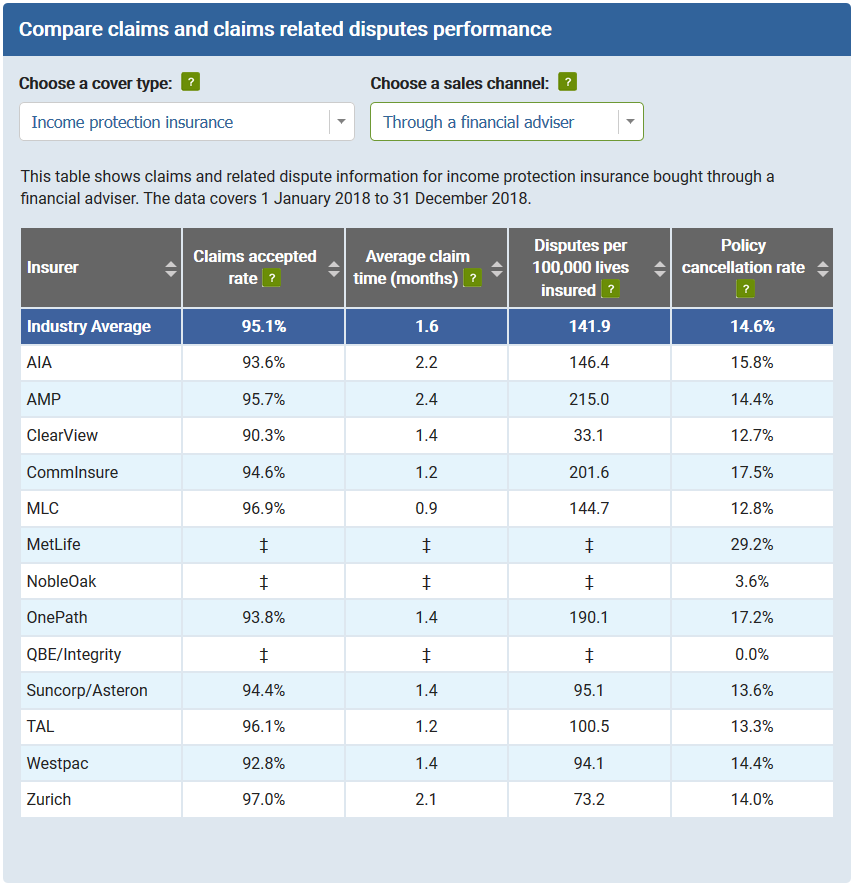- Yes (72%)
- No (20%)
- Not sure (8%)
Our latest poll results suggest life company claims records will impact advisers’ selection of product solution for their clients.
As we go to press, two advisers in three think the new data, which includes comparative life company claims records, will contribute to helping them with their future choice of product solution.
In case you missed our earlier reporting, APRA will now be updating life company claims data every six months (see: APRA Releases ‘World-Leading’ …Claims Data), where comparative analysis at life company level will include metrics on:
- Percentage of claims accepted
- Length of time taken to pay claims
- Number of disputes
- Policy cancellation rates
Not all advisers, however, rate this information in terms of its impact on their future product selection. One adviser’s opinion was summed up in this comment:
“…I’m not making long term protection recommendations based on a company’s fluctuating operational performance today.”
His opinion, though, reflects that of the minority, with most advisers giving their thumbs-up to the potential impact of the data for their future product selection.
As we look forward to monitoring and reporting APRA’s six-monthly claims data updates, our poll remains open for another week if you want to have your say…






To the “one adviser” and his long term comment, I suggest that if you are willing to accept that behaviour today, you accept it long term. What would encourage the insurers to do better? If you do nothing today then you endorse that outcome in the future.
The promise we make to our clients is that we will be there to help when that unforeseen event happens and funds will be made available. The big issue for me is that the insurers need to get the money in the client’s hand much quicker with a lot less stress then their current performance. The delays are unacceptable.
Call me sceptical, but for the vast majority of my clients who will likely and thankfully never need to claim on their insurance, I would not be recommending a sub-standard (or even standard) product on offer from Insurer A today based on what you say are “better” operational results reported by ASIC when this picture will look entirely different in 6 months time.
How is your advice going to look in a few years time after Insurer A has found it cannot sustain a 97+% payment rate and your clients are continuing to get slugged with premium increases, along with Insurer A’s high cancellation and lapse rate?
Encouraging Life Co’s to compete on claims payment rates is fraught and in no way sustainable or in the best interests of your clients.
I am at a loss as to why there does not seem to be a high correlation between ‘Claims accepted rate’ and ‘Disputes per 100,000 lives insured’.
Clearview has the lowest ‘Disputes per 100,000 lives insured’, being less than i/2 of the next best competitor and yet has the poorest ‘Claims accepted rate’. Whereas Comminsure has 6x the ‘Disputes per 100,000 lives insured’ but a much higher ‘Claims accepted rate’.
Does this mean that you just have to fight harder with a Comminsure claim but eventually you have a better chance of it being paid than if you have had a claim with Clearview?
APRA noted caution in interpreting dispute rates due to the relatively small number of disputes lodged per total claim volume. One reason CommInsure may have seen higher dispute rates is increased media scrutiny prior to the reporting period.
Comments are closed.